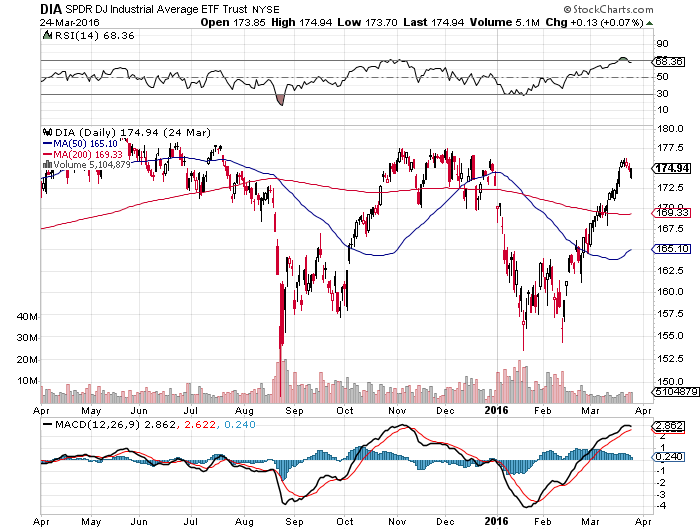The term bear market rally is one that has been used with great enthusiasm over the last month. Many believe that the recent uphill climb in the stock market is due to a sharp rebound as a result of oversold conditions rather than an intermediate or long-term investable bottom.
Bear market rallies are often characterized as short, violent bounces that will ultimately lead to a re-test or break of the prior lows.
A good client of mine recently sent me an excerpt from a podcast with Louise Yamada, the former head of technical research for Citigroup and prominent market technician. Louise made some very insightful statements that detailed why she believes we are in the final stages of a bear market rally for stocks.
I certainly have no evidence to disprove her theory and agree we could very well see the stock market roll over in the near future. I think that most investors would acknowledge we have moved from oversold to overbought during the month of March and there is likely going to be at least a modest dip from current prices. This would work off some of the overbought momentum and create a more attractive entry point for new capital.
The symmetry of the 2015 market correction and the one that has unfolded this year is also notable on many of the major stock market indices. A chart of the SPDR Dow Jones Industrial Average ETF (DIA) below highlights this pattern.
In my opinion, the bigger problem with labeling the current ramp a bear market rally is that you confront two issues over time:
- If you are right – then market rolls over to re-test or break the lows. However, you are then forced to forecast the next leg (higher or lower) thereafter. Furthermore, if you don’t get the “real” bottom correctly, your hard won credibility takes a hit and you miss out on a great deal of upside opportunity.
- If you are wrong – then you are forced to capitulate at the high and declare that “all is well” at a point where you have likely missed the majority of the move. Telling everyone to stay safe for 10-15% and then buy higher is an awful way to invest.
Much of this labeling comes from investors always wanting to know why something happened and what is going to happen next. Ultimately, no one knows where we are headed 100% of the time. Just because someone goes on TV and says with conviction that we will experience a precise outcome, does not mean that it will happen with guaranteed certainty. They are making an educated guess based on their experience and a dose of gut feeling.
My advice is to avoid labeling very short-term moves in the market that will bias your portfolio in one direction. By keeping a balanced asset allocation and flexible mindset, you can evade the wild swings of fear and greed that lead to selling lower and buying higher.
There is nothing wrong with making small, tactical shifts that help bolster your defenses or take advantage of new opportunities with cash on hand. However, you will likely keep yourself out of trouble by retaining a portion of your asset allocation in low-cost and diversified core holdings. In my opinion, a well-chosen group of exchange-traded funds is perfect for this task.
Lastly, I am including here my recent video discussing the case for and against the notion that this is just a bear market rally for stocks. As I mentioned, the rally in the stock market has extended to new recovery highs in March and some are calling this a bear market rally.
I look at some of the top technical and fundamental reasons the market is behaving the way it is.
Thanks for reading.
Twitter: @fabiancapital
Gather more insights from David’s investment blog.
The author of his clients may hold positions in mentioned securities. Any opinions expressed herein are solely those of the author, and do not in any way represent the views or opinions of any other person or entity.









